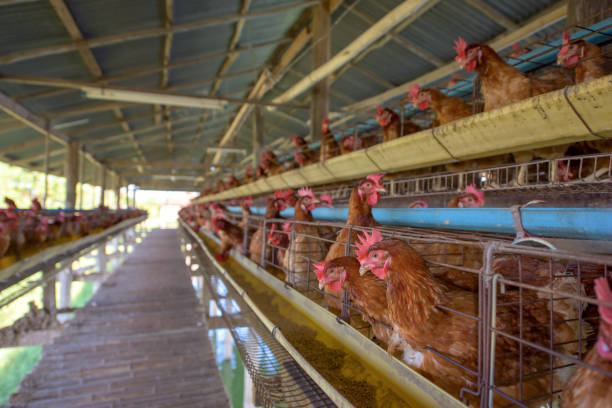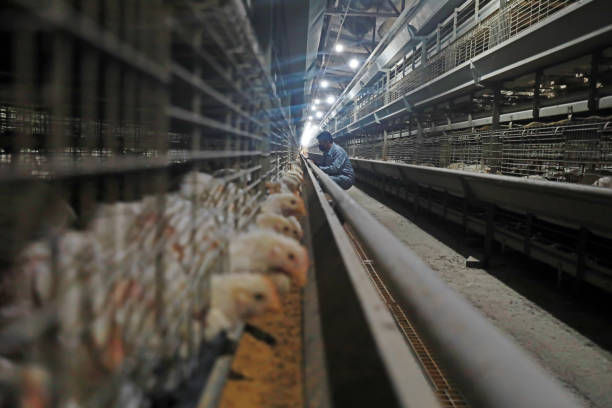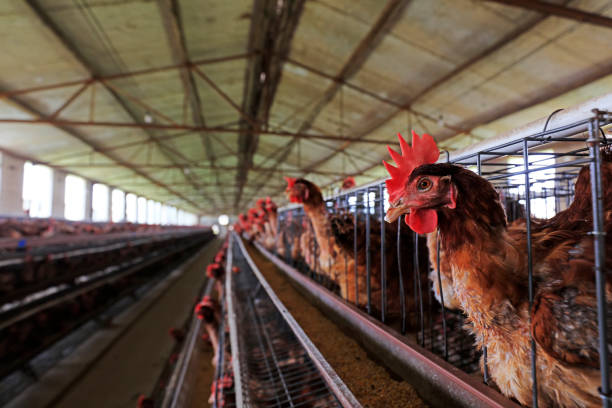
Investing in Commercial Poultry Cage Systems in Cameroon: A Guide
Investing in Commercial Poultry Cage Systems in Cameroon: A Guide
Cameroon’s poultry industry is a dynamic sector with significant potential for growth. Investing in a commercial poultry cage system can be a profitable venture if approached with careful planning and a thorough understanding of the market and operational requirements. This guide provides a comprehensive overview of investing in commercial poultry cage systems in Cameroon, covering essential aspects from initial planning to long-term management.
Understanding the Cameroonian Poultry Market
Before diving into the specifics of poultry cage systems, it’s crucial to understand the landscape of the Cameroonian poultry market.
Demand and Consumption: Poultry meat and eggs are staples in the Cameroonian diet. Demand is consistently high, driven by population growth and urbanization. The increasing awareness of poultry as a relatively affordable and healthy source of protein further fuels demand.
Local Production vs. Imports: While local poultry production exists, it often struggles to meet the national demand, leading to imports. This gap presents an opportunity for local producers to increase their market share by improving efficiency and output.
Key Players: The poultry market in Cameroon comprises small-scale farmers, medium-sized commercial farms, and a few large-scale producers. Understanding the competitive landscape is vital for positioning your business effectively.
Market Trends: There is a growing trend towards commercially raised poultry due to its increased hygiene, health benefits and overall yield. Free range poultry is still a niche market in Cameroon.
Choosing the Right Poultry Cage System
Selecting the appropriate poultry cage system is a critical decision that will influence your farm’s productivity and profitability. Here’s a breakdown of the different types of cage systems and factors to consider when making your choice:
Types of Poultry Cage Systems
Layer Cages: Designed specifically for egg-laying hens, layer cages are available in various configurations, including:
Conventional/Battery Cages: These are traditional systems with multiple tiers, housing several hens per cage. They offer high density and ease of management but have raised ethical concerns regarding animal welfare in some regions.
Enriched Cages: Also known as furnished cages, these provide hens with more space and features like perches, nesting areas, and scratching pads, promoting better welfare.
A-Frame Cages: These cages are shaped like the letter A, providing efficient space utilization and easy access for feeding and egg collection.
Broiler Cages: Used for raising meat chickens (broilers), broiler cages are designed to maximize growth rates and minimize disease spread. Consider these elements when choosing your broiler cage system:
Floor Type: Broiler cages often have mesh or plastic floors that allow droppings to fall through, improving hygiene.
Space Allowance: Providing adequate space per bird is crucial for preventing overcrowding and promoting healthy growth.
Pullet Cages: Pullet cages are designed for young chicks that have not been housed in the layer cages yet. These birds will require specialized care to ensure efficient and safe growth.
Factors to Consider When Selecting a Cage System:
Bird Welfare: Prioritize systems that promote the health and well-being of your birds. This includes providing adequate space, proper ventilation, and access to food and water.
Farm Size and Capacity: Choose a system that aligns with the size of your farm and your desired production capacity.
Ease of Management: Opt for systems that are easy to manage, clean, and maintain. Automated systems can reduce labor costs and improve efficiency.
Cost: Consider the initial investment cost, as well as ongoing operational costs like feed, water, and labor.
Climate: Cameroon’s climate can be hot and humid, so it’s essential to select a cage system that provides adequate ventilation and temperature control. Ensure sufficient airflow to prevent heat stress.
Local Regulations: Be aware of any local regulations regarding poultry farming and cage systems.
Sourcing Poultry Cage Systems in Cameroon
Once you’ve decided on the type of cage system you need, the next step is to source it. You have several options:
Local Manufacturers: Partnering with a local manufacturer can offer several advantages, including lower transportation costs, faster delivery times, and easier access to after-sales support. However, ensure the manufacturer meets your quality standards.
International Suppliers: Importing cage systems from international suppliers can provide access to a wider range of options and potentially higher-quality systems. However, consider the additional costs associated with shipping, customs duties, and import taxes. Also, factor in the time for international transit.

Considerations When Choosing a Supplier:
Reputation and Experience: Select a supplier with a proven track record of providing high-quality products and reliable service.
Product Quality: Ensure the cage system is made from durable materials that can withstand the demands of poultry farming.
Warranty and Support: Look for suppliers that offer warranties on their products and provide ongoing technical support.
Price: Compare prices from different suppliers to ensure you’re getting a competitive deal.
Setting Up Your Poultry Farm
Proper setup is crucial for a successful poultry farming operation.
Site Selection: Choose a site that is easily accessible, has a reliable water source, and is away from residential areas to minimize noise complaints.
Building Construction: Construct poultry houses that are well-ventilated, insulated, and protected from predators. Adequate space is essential for the birds to roam freely.
Cage Installation: Install the cage system according to the manufacturer’s instructions. Ensure proper alignment and secure connections.
Ventilation and Climate Control: Implement effective ventilation and climate control systems to maintain optimal temperature and humidity levels.

Water and Feeding Systems: Set up reliable water and feeding systems that provide birds with constant access to fresh water and food. Consider automatic systems to reduce labor costs.
Waste Management: Establish a proper waste management system to dispose of manure and other waste materials responsibly. This helps reduce odors and prevent the spread of diseases.
Managing Your Poultry Farm
Effective management is essential for maximizing productivity and profitability.
Feeding and Nutrition: Provide birds with a balanced diet that meets their nutritional needs. Consult with a poultry nutritionist to develop an appropriate feeding program.
Water Management: Ensure birds have constant access to fresh, clean water. Regularly monitor water quality and adjust as needed.
Health Management: Implement a comprehensive health management program to prevent and control diseases. This includes vaccination, biosecurity measures, and regular monitoring of bird health.
Biosecurity Measures: Implement strict biosecurity measures to prevent the introduction and spread of diseases. Restrict access to the farm, disinfect equipment, and control pests.
Egg Collection and Handling (for Layer Farms): Collect eggs regularly and handle them carefully to prevent damage. Store eggs in a cool, dry place.
Record Keeping: Maintain detailed records of all aspects of your operation, including feed consumption, egg production, mortality rates, and expenses. This information will help you track your performance and identify areas for improvement.
Labor Management: Hire and train competent staff to manage your poultry farm. Provide ongoing training to ensure they are up-to-date on the latest best practices.
Financial Considerations
Understanding the financial aspects of poultry farming is essential for making informed decisions.
Initial Investment: Calculate the initial investment required to set up your poultry farm, including land, buildings, cage systems, equipment, and initial stock.
Operating Costs: Estimate your ongoing operating costs, including feed, water, labor, electricity, and veterinary expenses.
Revenue Projections: Project your revenue based on your expected production volume and market prices.
Funding Options: Explore different funding options, such as bank loans, government grants, and private investors.

Profitability Analysis: Conduct a profitability analysis to determine the potential return on investment (ROI) for your poultry farm.
Challenges and Opportunities
The poultry industry in Cameroon presents both challenges and opportunities.
Challenges:
High Feed Costs: Feed costs can be a significant expense, impacting profitability.
Disease Outbreaks: Disease outbreaks can lead to significant losses.
Market Fluctuations: Market prices can fluctuate, impacting revenue.
Access to Finance: Access to finance can be a challenge for small-scale farmers.
Opportunities:
Growing Demand: The growing demand for poultry products presents a significant opportunity for local producers.
Government Support: The Cameroonian government is supportive of the agricultural sector and offers various incentives to farmers.
Technological Advancements: Technological advancements in poultry farming can improve efficiency and reduce costs.
Value Addition: Opportunities exist for value addition, such as processing and packaging poultry products.
Legal and Regulatory Framework
Navigating the legal and regulatory framework is essential for operating a poultry farm in Cameroon.
Business Registration: Register your business with the appropriate authorities.
Environmental Permits: Obtain the necessary environmental permits to operate your poultry farm.
Food Safety Regulations: Comply with food safety regulations to ensure the safety of your poultry products.
Labor Laws: Adhere to labor laws regarding employment contracts, wages, and working conditions.
Sustainability and Environmental Responsibility
Sustainable poultry farming practices are becoming increasingly important.
Waste Management: Implement effective waste management practices to minimize environmental impact.
Water Conservation: Conserve water by using efficient watering systems and recycling wastewater.
Energy Efficiency: Reduce energy consumption by using energy-efficient equipment and practices.
Responsible Sourcing: Source feed and other inputs from sustainable sources.
Conclusion
Investing in commercial poultry cage systems in Cameroon can be a rewarding venture. By carefully planning your operation, selecting the right cage system, implementing effective management practices, and understanding the market dynamics, you can establish a successful and profitable poultry farm. Remember to stay informed about the latest trends and technologies in the industry and adapt your strategies accordingly. Continuously assessing your farm’s performance and making necessary adjustments will ensure long-term success in the dynamic Cameroonian poultry market.
